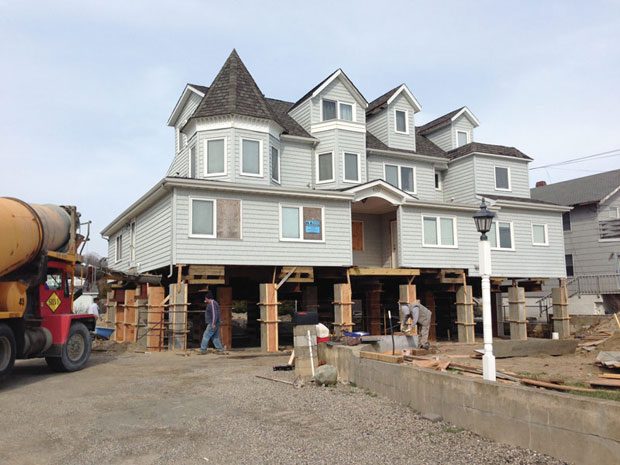
While some Jersey Shore homeowners—like the Sea Girt family featured in this month’s Home and Garden—were spared Hurricane Sandy’s wrath, countless others were not that lucky and now face tough decisions about rebuilding, renovating and, in many cases, raising their homes.
The question of when a home should be raised is particularly baffling. No one can make you raise your house, but homeowners in flood zones who do not take action will face a significant increase in flood-insurance premiums and banks will likely withhold new financing.
From Sandy Hook to Cape May, homes are being lifted “by the thousands,” says Jack Purvis, until recently president of the New Jersey chapter of the American Institute of Architects (AIA-NJ). Whether a property is deemed at risk will be determined by the Federal Emergency Management Agency’s new flood elevation maps for the Jersey Shore. For now, the FEMA maps are preliminary advisory guidelines, not yet universally approved. Ultimately, they will recommend elevation heights for each home.
The flood maps also tell homeowners what kind of foundation they need if they lift. “Zones and soil conditions dictate the type of foundation you’re going to have,” says Purvis. There are two zone designations: A and V. (The V signifies velocity of wave action.)
A home in an A zone doesn’t necessarily require a deep foundation, says Purvis, and can be lowered onto footings spread underneath the house. A V-zone home requires a deep foundation and pilings, either standard (like telephone poles bored into the ground) or helical (corkscrewed into the ground).
The complicated and costly process of lifting a home begins with a visit by two separate engineers, one to prepare an elevation certificate, the other to test the soil. The elevation certificate indicates how high a home must be lifted to conform with the FEMA recommendation; the soil test determines what sort of foundation is needed beneath the lifted house. “If they find that the soil can’t support footings, you’ll need to use pilings,” says Purvis.
So why are some homes already lifted, while their neighbors are not? “A lot of people are having trouble getting the financing,” says Purvis. “They are trying to see what money they can obtain through loans and grants and insurance. It’s going to take several years for this to all play out.”
Lifting a house can cost from $50,000 to $150,000 or more, Purvis says. The estimate includes the new foundation—the cost of which varies widely—and relocation of the utilities.

This article has taught me a lot about home lifts. It was interesting to learn that these type of lifts can help you to avoid damages to your foundations in the future. I hope this article can help us to know how to avoid costly home repairs in the future. http://www.myroncukhousemovers.com/
I like how you mentioned that home owners face the possibility of increased premiums if they don’t take action in times of flooding. I can still understand why some people wouldn’t want to leave their homes vulnerable to the elements, so for many people, raising a home may seem like a good option. My sister lives in a flood zone and they are considering raising their home during this hurricane season because while they are planning on evacuating, they want to make sure that their home is safe from flooding.
http://www.myroncukhousemovers.com/